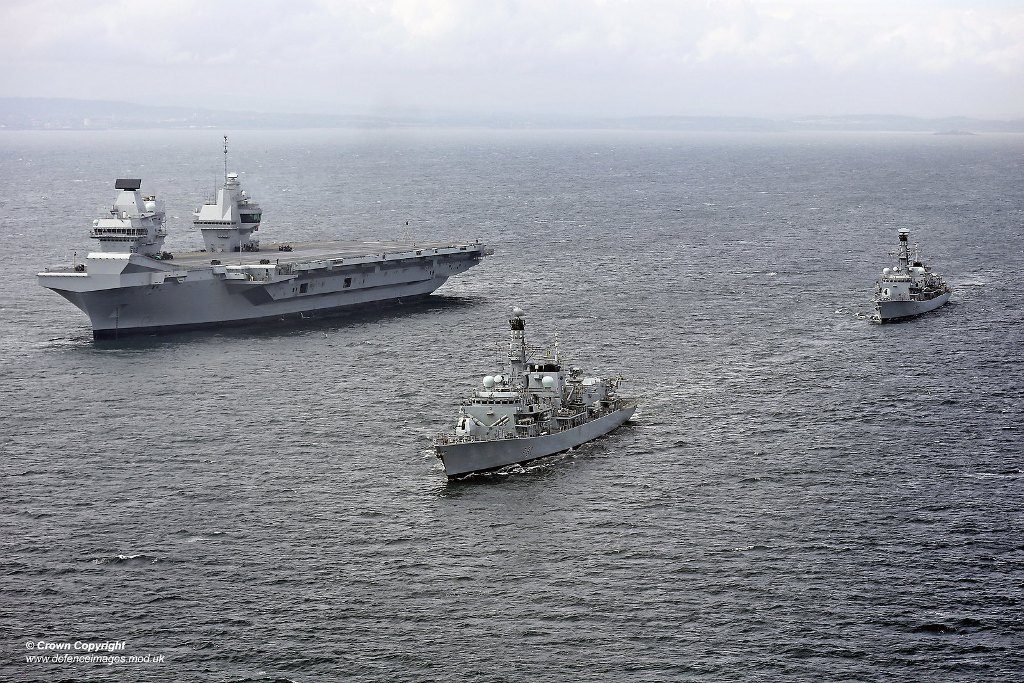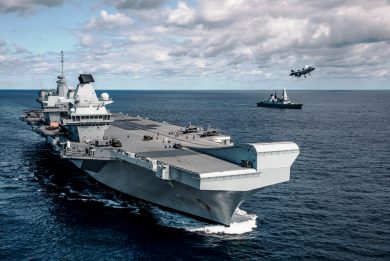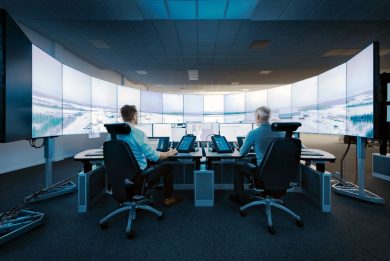
UK Rebuilds a Global Navy
By Ian Kemp
The “Royal Navy is growing for the first time in 70 years and that’s a great place to be in for the service,” Admiral Tony Radakin, First Sea Lord and Chief of Naval Staff, told delegates at the DSEI Maritime Capability Conference 2019. The Navy’s recapitalization program includes nuclear submarines, aircraft carriers, two new frigate programmes, offshore patrol vessels, support ships and aircraft that will transform the service.
In parallel with the introduction of these platforms the admiral stressed that “the Navy needs to change. The reasons why are compelling, defence and the Navy’s strategic context has changed and we need to change with it. We’re now in an era of potential state-on-state conflict [and] threats are appearing in different ways. This is not a straightforward return to the old Cold War and that mentality. Sub-threshold and ‘grey zone’ activity is becoming much more the norm. We’re in a state of constant competition and we need to be able to handle and shape and respond. The global economy is increasingly shifting towards the east and we need to understand and work with that change. Brexit is another obvious strategic change and one where we need to be ready to support the government in implementing this smoothly and also play our role in highlighting that we are not withdrawing from the world stage. In fact, quite the opposite – we are a global navy, supporting a global Britain. And finally, we are in an era of rapid technological change. This is affecting everything across society from the way we live our lives to the way that we will conduct warfare.”
Admiral Radakin outlined his five main priorities for transformation. “Firstly, the North Atlantic. This is key to ensuring the freedom of movement of the nuclear deterrent but is an area where we’re facing increasing pressure, especially from Russia. We need to carry on investing here so that we can maintain and even extend our advantage and in turn fulfil our commitments to the nation and to our allies.”
His second priority is carrier strike. Lead carrier HMS Queen Elizabeth sailed on 30 August for the east coast of the United States to conduct operational trials with the UK’s new F-35B Lightning II aircraft and HMS Prince of Wales, the second of the pair of carriers, is scheduled to leave the dock at Rosyth, Scotland on either Friday or Saturday, depending on the weather. “We are enormously grateful for the investment by successive governments and the nation,” said Radakin. “My task now is to deliver on this, increase and magnify the value of that investment. And we need to shift the whole Navy to being a carrier task group navy that will allow us to project our power around the world and at a level alongside our American and French allies.”
“My third priority is the Future Commando Force. We will build on the amazing cachet and specialness of our Royal Marines, blend them with technology and have fifth generation commando warriors. We plan to have more Royal Marines deployed forward and ready to respond whether to deliver humanitarian support linked with our security partners across government or in their more traditional warfighting role as door openers for heavier forces behind them.”
The admiral’s fourth priority is forward presence. The Type 23 frigate HMS Montrose is now based in Bahrain for a three-year period with crews rotating periodically. “This is about being able to demonstrate a global navy, project influence and respond to threats far more quickly. I intend to have a higher percentage of the Navy at sea and stationed abroad. We’ve already seen the success of forward basing in Bahrain. Now I want to have a conversation about whether we could have ships forward based in other areas of the world where we have significant UK and international interests.”
The fifth priority is to embrace technology and innovation in a much bigger way. “We are seeing some great things across the service, but it has to be stronger, bolder and far more impactful.” The admiral cited one potential example of such change. “At the moment we use mine counter measures ships to go into minefields with a full crew and slowly work up and down that area to find and then neutralize mines. This involves lots of ships and it puts them and their people in harm’s way. Autonomy is allowing us to contemplate a mothership with a crew operating in relative safety and using autonomous systems to go into the mine danger area, search the area far more quickly and deal with any mines that are found. This will be more effective, safer and potentially cheaper, and it might not require the same numbers of either people or ships.”
Photo courtesy UK MoD



